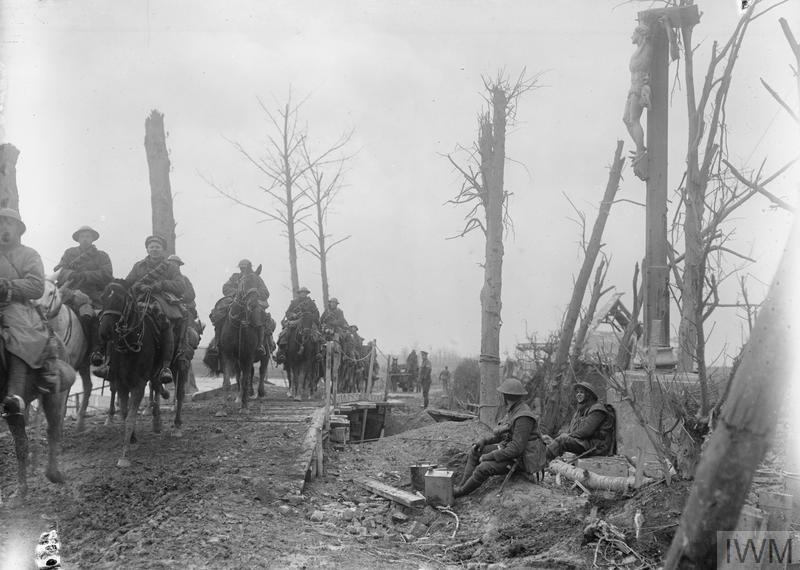Pursuit to Mons
The capture of the Belgian city of Mons on the last day of the war, 11th of November, 1918, had great emotional significance to those connected with the conflict. Mons had been the site of the first engagement between the British and German armies on the Western Front in August 1914.
The Honour is borne on the Guidon of the 8th Hussars.
Detail
On the very wet 6thof November, the 8th Hussars paraded at 08.15 and proceeded to the starting point east of Estrees.
The Brigade set out with the 8th Hussars leading. It marched via Roisel, Epehy and Villers Guislain to the Bantouxbelles area. The horses and men were largely in the open, and all the shelter the officers obtained was that of tumble-down houses and cellars.
The regimental billets were at Vaucelles, and the march ran through the battlefield of the 30th of November, 1917, the fierce fight of Cambrai, where the regiment was in action.
The victorious pursuit to Mons was continued.
The regiment marched north via Cambrai, Epincy to Arleux. To the feet of the men and to the feet of the horses this was an extremely slow, an extremely tiring, march. The spirits of the soldiers were, however, high, as they felt that the end was visibly drawing nearer and nearer with every step they took.
The march continued on the 8th. The regiment paraded at 7.30 am, and marched via Douai towards Abbaye, south-east of Lille, arriving there at 5 pm. The billets were fairly good, and all the men were undercover, though many of the horses were not.
On the 9th the Column marched via Tcmpleuve to Mouchin, where its billets for the night were good. The Column paraded at 8.30 am and marched via Blehares to Peruweltz.
It was a difficult march, for much of it was over streams with their bridges blown up and with craters at the crossroads. For instance, the bridge at Blehares was blown up and only a portion of it was available for crossing.
The Column reached Peruweltz at 14.30 pm, and the inhabitants warmly greeted it. The men received good billets and the horses were undercover.
The Column had orders to co-operate with the 58th Division and the 1st Cavalry Brigade south-east of Ath, but orders were received at midnight to rejoin the 9th Cavalry Brigade, then at Maffles.
The Column marched at 7.45 am on the 11th of November via Basecles and Ath to Maffles. It was a fast march, and Maffles was reached at 11 am. The inhabitants gave us a warm welcome and provided good billets.
The moment the 8th Hussars reached Maffles they heard the armistice had been signed.


